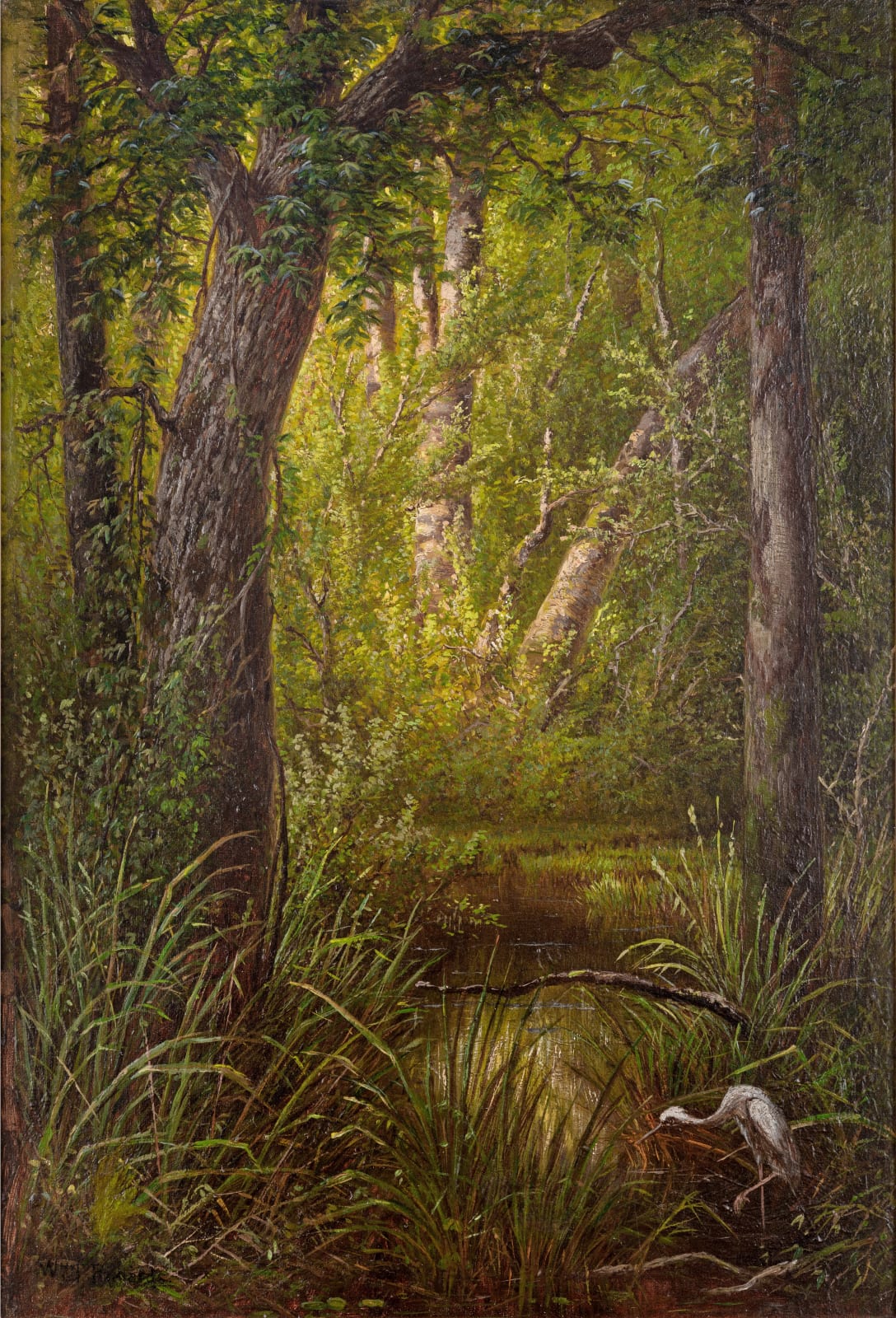-
Artworks
William Trost Richards 1869-1965
Woodland InteriorOil on canvas21 7/8 x 14 3/4 inches (55.6 x 37.5 cm)
Framed dimensions: 32 7/8 x 26 inchesSigned lower left: Wm. T. Richards'Paint the leaves as they grow! If you can paint one leaf, you can paint the world,' wrote John Ruskin in his influential Modern Painters of 1843. William Trost Richards..."Paint the leaves as they grow! If you can paint one leaf, you can paint the world," wrote John Ruskin in his influential Modern Painters of 1843. William Trost Richards took these words quite literally in his Woodland Interior. His meticulous rendering of the leaves on the trees and forest floor brilliantly demonstrates Ruskin's call for truth in nature.
During the 1860s Richards aligned himself with the American Pre-Raphaelite Movement as led by Thomas Charles Farrer. Farrer himself was a devoted follower of Ruskin, the father of the British Pre-Raphaelites. Both groups of artists pursued Ruskin's belief that spiritual insight came from diligent examination and extreme fidelity to nature in the raw. The British Pre-Raphaelites explored the figure in their artistic pursuits and used interpretation and imagination to achieve their end results. The Americans were less interested in the figure and applied Ruskin's theories to their paintings of the landscape or still life. The critical and popular response to their works was mixed. On the one hand the artwork was technically dazzling, on the other it was mere transcription of what was observed in nature devoid of imagination or romance. Perhaps the greatest obstacle the American Pre-Raphaelites faced was the amount of time it took to complete one painting. Even the artists most devoted to the movement found it difficult to upkeep. Richards himself said he stopped painting in the style because he could not afford for his works to take so long to finish.
From the beginning of his career Richards was apt to come under the spell of Ruskin. His early training in commercial draftsmanship afforded him with an extraordinary level of technical control and skill. In 1858 he saw an exhibition of the British Pre-Raphaelite School at the Pennsylvania Academy of the Fine Arts and was taken by the artists' minute copying of nature. It is not surprising that his own experiments with such high fidelity painting followed immediately thereafter. Some of these works were more successful than others. Richards was at his best when there was little spatial recession and most of the composition resided in the immediate foreground, as seen here in Woodland Interior. By 1865 Richards knew that he couldn't forsake the general effects of light and atmosphere in favor of only recording detail. While he certainly followed the strenuous regimen required of the American Pre-Raphaelites, his artistic vision was broader, in that it was deeply grounded in actual perception.1 Woodland Interior was painted en plein air, as were all of Richards's such paintings. By experiencing and capturing the landscape as it was in nature, Richards tempered the hyperclarity of the details with the rich and ineffable effects of the natural world itself.
1 Linda S. Ferber, William Trost Richards: American Landscape and Marine Painter, 1833–1905, exh. cat. (1973), pp. 24–30.
Provenance
The artist;
James Bayard Henry (1857-1926), Philadelphia;
By descent in the family, Nantucket, Massachusetts, until 2023
2of 2
Please join our mailing list
* denotes required fields
We will process the personal data you have supplied in accordance with our privacy policy (available on request). You can unsubscribe or change your preferences at any time by clicking the link in our emails.



